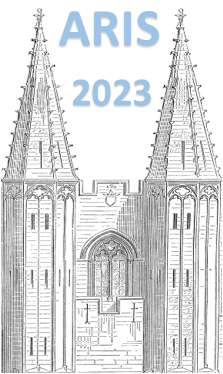Orateur
Description
The ISOLDE Solenoidal Spectrometer (ISS) has been built for measuring direct reactions in inverse kinematics with radioactive beams (RIBs) from HIE-ISOLDE, with a focus on obtaining excellent charged particle resolution. ISS was fully commissioned in 2021 with a new silicon array developed by the University of Liverpool. This array makes use of double-sided silicon strip detectors, with ASIC readout, to determine the position of interaction and the energy of light ejectiles from reactions of RIBs with a light-ion target, when they return to the beam axis in the solenoid field. ISS has now completed two full physics campaigns focussing on measurements of the (d,p) reaction to probe single-neutron behaviour in various systems. This talk will give an overview of ISS and a summary of the physics campaigns from the last two years with a focus on evolving single-particle structure.
The study of single-particle structure in light neutron-rich systems has led to discoveries of dramatic changes which are otherwise gradual near stability, leading to the weakening and appearance of shell closures. For example, the disappearance of $N = 20$ and emergence of $N = 16$ [1, 2] as well the emergence of $N = 32, 34$ in calcium isotopes [3]. Pronounced trends have also been observed in stable heavier nuclei, in the changes in high-j states as high-j orbitals are filling. Studies of chains of stable, closed-shell isotopes [4] and isotones [5] have pointed to robust mechanisms for these changes, such as the importance of a tensor interaction [6]. The beams available at ISOLDE allow an extension of these studies both in light neutron-rich systems but also in heavier systems such along $N=126$. Measurements looking at the properties of the single neutron outside both $N=16$ and $N=126$ will be covered here.
[1] A. Ozawa et al., Phys. Rev. Lett. 84, 5493 (2000).
[2] C. R. Hoffman et al., Phys. Lett. B 672, 17 (2009).
[3] D. Steppenbeck et al., Nature 502, 207 (2013).
[4] J. P. Schiffer et al., Phys. Rev. Lett. 92, 162501 (2004).
[5] B. P. Kay et al., Phys. Lett. B 658, 216 (2008), D. K. Sharp et al., Phys. Rev. C 87, 014312 (2013).
[6] T. Otsuka et al., Phys. Rev. Lett. 95, 232502 (2005).

